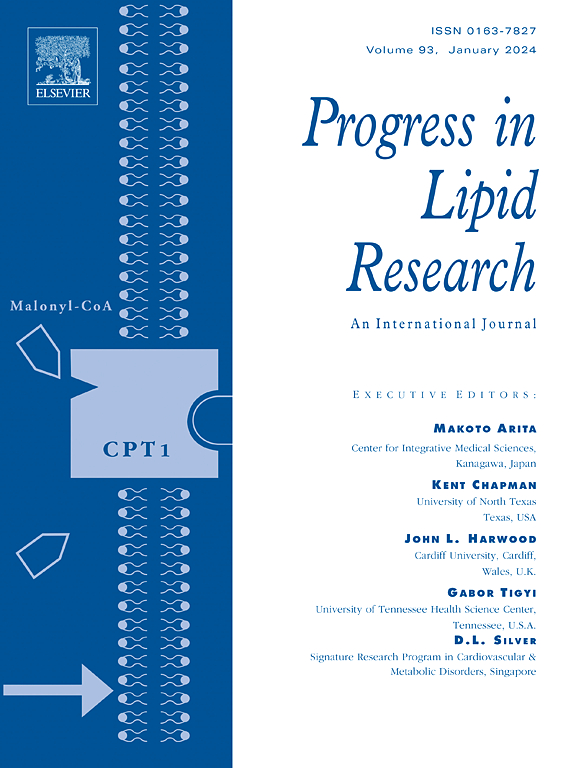Increasing oil content in Brassica oilseed species
IF 14
1区 医学
Q1 BIOCHEMISTRY & MOLECULAR BIOLOGY
引用次数: 0
Abstract
Brassica oilseed species are the third most important in the world, providing approximately 15 % of the total vegetable oils. Three species (Brassica rapa, B. juncea, B. napus) dominate with B. napus being the most common in Canada, China and Europe. Originally, B. napus was a crop producing seed with high erucic acid content, which still persists today, to some extent, and is used for industrial purposes. In contrast, cultivars which produce seed used for food and feed are low erucic acid cultivars which also have reduced glucosinolate content. Because of the limit to agricultural land, recent efforts have been made to increase productivity of oil crops, including Brassica oilseed species. In this article, we have detailed research in this regard. We have covered modern genetic, genomic and metabolic control analysis approaches to identifying potential targets for the manipulation of seed oil content. Details of work on the use of quantitative trait loci, genome-wide association and comparative functional genomics to highlight factors influencing seed oil accumulation are given and functional proteins which can affect this process are discussed. In summary, a wide variety of inputs are proving useful for the improvement of Brassica oilseed species, as major sources of global vegetable oil.
提高甘蓝类油菜籽的含油量。
芸苔属油菜籽是世界上第三大重要的油菜籽品种,约占植物油总量的 15%。在加拿大、中国和欧洲,以芸薹属油菜(Brassica rapa)、芸薹属油菜(B. juncea)和芸薹属油菜(B. napus)三个品种为主,其中以芸薹属油菜最为常见。最初,油菜是一种生产芥酸含量高的种子的作物,这种种子在某种程度上至今仍然存在,并被用于工业用途。相比之下,生产用于食品和饲料的种子的栽培品种是低芥酸栽培品种,其葡萄糖苷酸含量也较低。由于农业用地的限制,人们最近一直在努力提高油料作物(包括芸苔属油籽品种)的产量。本文详细介绍了这方面的研究。我们介绍了现代遗传、基因组和代谢控制分析方法,以确定操纵种子含油量的潜在目标。文章详细介绍了利用数量性状基因位点、全基因组关联和比较功能基因组学突出种子油脂积累影响因素的工作,并讨论了可影响这一过程的功能蛋白质。总之,作为全球植物油的主要来源,各种投入证明对改良芸薹属油菜籽品种非常有用。
本文章由计算机程序翻译,如有差异,请以英文原文为准。
求助全文
约1分钟内获得全文
求助全文
来源期刊

Progress in lipid research
生物-生化与分子生物学
CiteScore
24.50
自引率
2.20%
发文量
37
审稿时长
14.6 weeks
期刊介绍:
The significance of lipids as a fundamental category of biological compounds has been widely acknowledged. The utilization of our understanding in the fields of biochemistry, chemistry, and physiology of lipids has continued to grow in biotechnology, the fats and oils industry, and medicine. Moreover, new aspects such as lipid biophysics, particularly related to membranes and lipoproteins, as well as basic research and applications of liposomes, have emerged. To keep up with these advancements, there is a need for a journal that can evaluate recent progress in specific areas and provide a historical perspective on current research. Progress in Lipid Research serves this purpose.
 求助内容:
求助内容: 应助结果提醒方式:
应助结果提醒方式:


